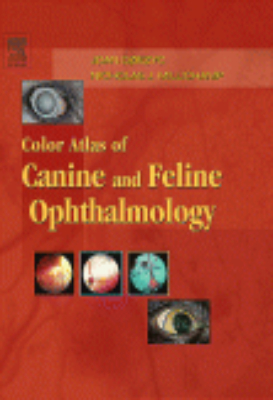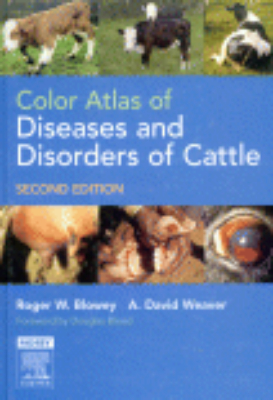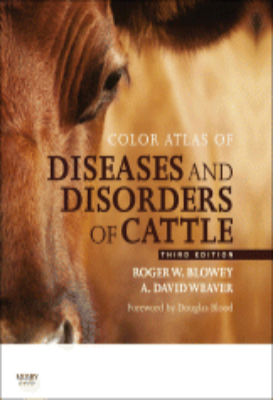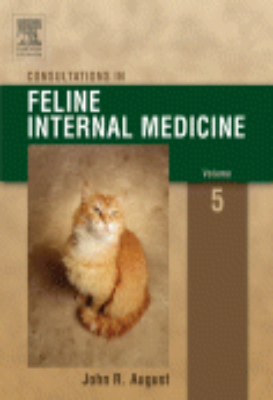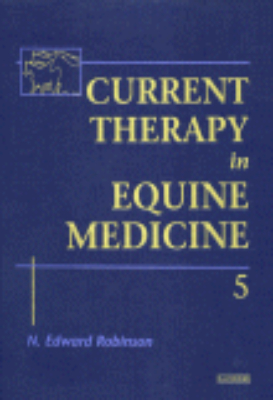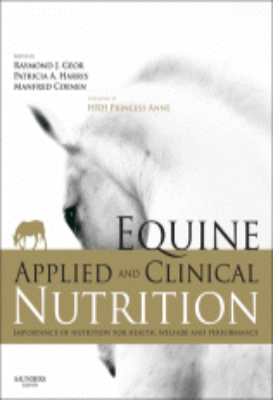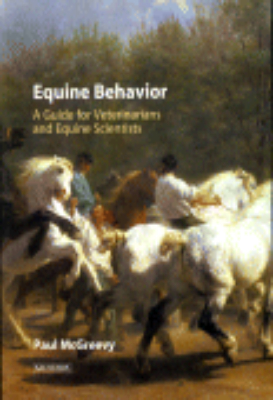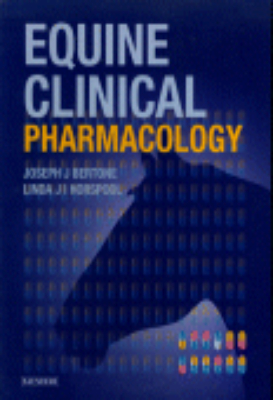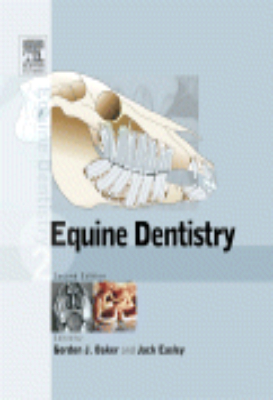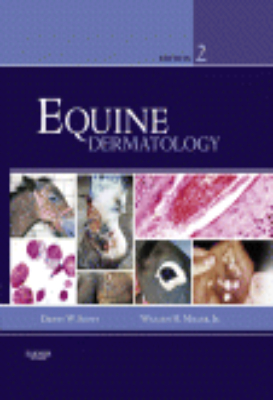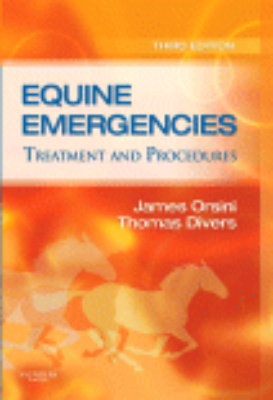E-Resources
Clinical Veterinary Toxicology
This book covers all aspects of toxicology, including toxic diseases of large animals, small animals, and exotic pets. It provides key information on how poisons affect the body, how the body responds to a foreign substance, how poisonings are diagnosed, and how poisonings are treated. Coverage includes every organ system of every species of animal with details on each body systems susceptibility to poison. Poisons affect animals differently depending on species, breed, age, gender, health status, and reproductive status. This resource addresses these differences, allowing the veterinarian to determine the class of toxicant, the mechanism of action, and the proper course of treatment. If confronted with an unknown poison, the information in this book will assist the veterinarian in formulating a list of potential poisons based on the clinical signs that the animal is exhibiting, and in choosing the appropriate tests to narrow the list to one or a few possible poisons.
Color Atlas of Diseases and Disorders of Cattle: 2003
The second edition of the Color Atlas of Diseases and Disorders of Cattle again illustrates all the conditions encountered in cattle worldwide. This new edition has been extensively revised and expanded to have more (now 752) illustrations, primarily of live animals.The revised text now includes sections on management and control for the important disorders. Newer conditions such as necrotic enteritis, toe ulcers, heel ulcers and tail necrosis have been added. The illustrations themselves have been reviewed. Many have been replaced, while others have been added, so that Foot and Mouth Disease has six and Rinderpest seven colour illustrations. Cross-references to other conditions, a major aid to differential diagnosis in the field, have been strengthened.Over 70 foreign contributors from the Far East (Japan, China) to South America (Brazil,Argentina), Africa (South Africa, Kenya, Somalia) and the United States (Pennsylvania, Florida, Missouri) have been joined by a further thirty from the UK. The emphasis of the atlas remains the visible signs of diseases and disorders in the live animal, and this gives the book a unique scope. This new edition will re-establish the firm place which the atlas already has in the veterinary market for cattle practitioners, government and industry veterinarians, as well as veterinary and agricultural students, and managers of large-scale cattle enterprises throughout the world.
Color Atlas of Diseases and Disorders of Cattle: 2011
The Color Atlas of Diseases and Disorders of Cattle is the established and respected illustrated guide to the full range of conditions encountered in cattle worldwide. For this new edition the atlas has been redesigned to present over 840 colour illustrations and clearer than ever coverage of conditions, with a special emphasis on ease of use. The text has been updated and rewritten to encompass many new conditions including burns, bleeding calf syndrome, rib fracture and jejunal hemorrhagic syndrome, while treatment of existing conditions has been expanded. The emphasis of this new edition of the Color Atlas remains the visible signs of diseases and disorders in the live animal. In its third edition guise, the atlas is an indispensable reference for both experienced and novice cattle practitioners, government and industry veterinarians, as well as veterinary and agricultural students, and managers of large-scale cattle enterprises throughout the world.
Color Atlas of Diseases and Disorders of the Foal
Color Atlas of Diseases & Disorders of the Foal is intended for any veterinarian who treats foals, either occasionally or on a routine basis, and serves as an invaluable source of practical clinical information. The illustrations cover all aspects of clinical presentation, diagnosis, treatments, and outcomes and provide a clear picture of what veterinarians should be looking for, perfect for timely intervention and more successful outcomes. Plus, two highly experienced editors share their expertise along with contributions from many well-known and highly respected veterinarians for the most comprehensive information available.
Color Atlas of Veterinary Pathology
For over 20 years, the first edition of this book provided veterinary students and pathologists with an invaluable fast and structured survey of the complete field of veterinary pathology. Now in its second edition, the authors have thoroughly revised, updated and added to both images and text, with the focus still on domestic animals. Each chapter now begins with a short, descriptive text on each body system covered in the atlas. It supports understanding of disease and disease processes by visualizing how cellular pathology, inflammation, circular disturbance and neoplasia are expressed in the different organs and tissues. For this purpose it demonstrates the general morphological reactions of organs and tissues using examples from specific veterinary pathology.
Consultations in Feline Internal Medicine
An invaluable addition to every small animal clinician's library, this resource investigates the latest topics and therapies in feline internal medicine such as neurogenic micturition disorders, chronic rhinosinusitis, feline asthma, osteoarthritis and geriatrics, obesity and its health consequences, shelter medicine, overpopulation, cruelty toward cats. Includes new, full-color illustrations throughout!
Controlled Release Veterinary Drug Delivery
Many controlled release veterinary drug delivery systems (CRVDDS) are presently in use, and recently there has been a host of new CRVDDS within veterinary medicine. The challenges of this area of drug delivery arise from the unique anatomy and physiology of the target animal, the cost constraints associated with the value of the animal being treated and the extended periods of time that delivery must be sustained for (often measured in months). The purpose of this book is to introduce the reader to the unique opportunities and challenges of the field of CRVDDS and to explain and discuss the basic controlled release principles underlying the development of CRVDDS. Its aim is to provide an overview of many of the areas where CRVVDS have application, and to highlight the opportunities and prospects for controlled release technology in the veterinary field. Controlled Release Veterinary Drug Delivery comprises chapters that provide workers in the field (and those interested in this area) with information on the design, development and assessment of a variety of CRVDDS. The book contains chapters that describe the relevant animal physiological and anatomical considerations alongside descriptions of current and emerging controlled release delivery systems for a variety of routes for drug delivery, and present overviews on the physical and chemical assessment of veterinary controlled release delivery systems. The veterinary area is abound with opportunities for the development of controlled release drug delivery technologies. It is an area of medicine that is open to the acceptance of novel drug delivery devices, and which readily encompasses the use of novel routes of administration. It is an area of many unmet needs, most of which offer opportunities and unique challenges for the innovative formulation scientist to provide solutions. This book will provide an insight into the biological, clinical and pharmaceutical challenges that face the formulation scientist in this interesting and diverse area of research.
Current Therapy in Avian Medicine and Surgery
A current and cutting-edge reference, Current Therapy in Avian Medicine and Surgery takes the popular Current Therapy approach in providing succinct and clear information pertinent to the medical care of avian species. Most chapters include an up-to-date delivery of the current state of knowledge on their subject material, and provide practical approaches and thought processes applicable to diagnosis and therapy where appropriate. Information is always easy to find, with topics including the latest advances in internal medicine; behavioral medicine; anesthesia, analgesia, and surgery. Sections dedicated to welfare, conservation, and practice risk management explore important, but less commonly discussed aspects of avian practice; and the pattern recognition portion of the text offers readers a view of what companion bird conditions are likely to be seen in practice in different parts of the world. Written by a team of highly regarded contributors from around the world, this text helps readers, regardless of location and current knowledge, develop and augment skills in the medical and surgical care of avian species.
Current Therapy in Equine Medicine
The latest expanded volume of the "gold standard" in equine medicine offers detailed guidance on the most up-to-date diagnostic methods, treatments, and preventive measures for both common and rare diseases of the horse. It features a systems approach, focusing on problems associated with each body system, with additional chapters on toxicology, nutrition, immunizations, and drug classes. New sections in this edition discuss clinical pharmacology and infectious diseases, and many new topics have been added to all sections, making it more comprehensive than ever. Internationally recognized editors and contributors present cutting edge information and authoritative perspectives.
Current Therapy in Equine Reproduction
Offering the most current insights on horse breeding, this book covers the entire reproductive system, normal and abnormal mare physiology, and a wide range of reproductive problems commonly seen in both the mare and stallion. Coverage includes advanced reproductive techniques, with numerous breeding strategies to help you achieve optimal fertility rates.
Diagnosis and Management of Lameness in the Horse: 2003
This book provides a comprehensive approach to lameness diagnosis, and focuses on the importance of clinical examinations and diagnostic analgesia. It allows for accurate diagnosis of equine lameness to be made more quickly and effectively by differentiating between different horses and their activities. Detailed descriptions of diagnosis include the common problem of what to do when a diagnosis cannot be met. Musculoskeletal dysfunction is discussed as a cause of poor performance and the management of a broad range of conditions causing gait abnormalities are included.
Diagnosis and Management of Lameness in the Horse: 2011
Helping you to apply many different diagnostic tools, Diagnosis and Management of Lameness in the Horse, 2nd Edition explores both traditional treatments and alternative therapies for conditions that can cause gait abnormalities in horses. Written by an international team of authors led by Mike Ross and Sue Dyson, this resource describes equine sporting activities and specific lameness conditions in major sport horse types. It emphasizes accurate and systematic observation and clinical examination, with in-depth descriptions of diagnostic analgesia, radiography, ultrasonography, nuclear scintigraphy, magnetic resonance imaging, computed tomography, thermography, and surgical endoscopy. Broader in scope than any other book of its kind, this edition includes a companion website with 47 narrated video clips demonstrating common forelimb and hindlimb lameness as well as gait abnormalities.
Diagnostic and Surgical Arthroscopy in the Horse: 2005
The latest edition of this pioneering text atlas incorporates all the advances that have taken place in the field over the last decade. Minimally invasive procedures are now established as the method of choice for many applications in equine orthopaedic surgery, not only as an aid to diagnosis, but also as an alternative to conventional surgery. The text has been completely revised and massively expanded to reflect the rapid growth of this specialty, and covers many important new applications and techniques. This latest edition also features new, full colour, high resolution images throughout, including digital video. It remains the most comprehensive reference available, yet still retains the established text-atlas format, and continues to provide readers with both authoritative comment and practical guidance on all aspects of this important technique.
Diagnostic and Surgical Arthroscopy in the Horse: 2015
From the worldwide leader in equine surgery, Wayne McIlwraith, comes the new fourth edition of Diagnostic and Surgical Arthroscopy in the Horse. Completely revised and expanded, this comprehensive atlas covers all the need-to-know information within equine arthroscopy: instrumentation, general techniques, carpal joints, metacarpal and metatarsophalangeal joints, and tarsocrural joints. All the advances that have taken place in the field over the last decade are covered, particularly in the areas of postoperative management and rehabilitation. This trusted reference also provides an in-depth view of surgical procedures with new high-definition diagnostic and surgical arthroscopic images, as well as radiographs and composite illustrations. There is no better way to learn and master equine surgical procedures!
Diagnostic Cytology and Hematology of the Horse
Cytologic and hematologic evaluations are important primary diagnostic activities for veterinarians. Approximately 50% of samples are processed on site in the veterinary office; that number is growing, as veterinarians seek to bring more laboratory revenue to their practices. In doing so, however, it is important for veterinarians and staff to understand correct collection and handling procedures to avoid costly errors and make accurate diagnoses. DIAGNOSTIC CYTOLOGY AND HEMATOLOGY OF THE HORSE is a practical reference that presents common clinical findings in an easy-to-use text/atlas format. Following a general chapter on sample collections and techniques, the remainder of the book takes a "systems" approach, followed by chapters on specific types of fluid. Within systems chapters, normal findings are presented first. Then, abnormal findings are presented by "class" of problems, such as bacterial lesions, fungal lesions, parasitic lesions, and so on, in the case of the eye. Algorithms (flow charts) on sample evaluations enhance text discussions by guiding readers to the most likely cytologic diagnosis. In addition, there is a colour plate section featuring 64 illustrations for quick viewing and comparing cell types and infectious agents. The detailed index will aid utilization of this edition as a quick photographic and textual reference.
Diagnostic Radiology & Ultrasonography of the Dog and Cat
This essential guide to the interpretation of radiographs and ultrasonograms illustrates normal anatomy and frequently encountered abnormalities and anomalies. It provides easy access to the fundamentals of image interpretation with thorough discussions of the basic principles and techniques for producing high quality radiographs. Coverage includes the principles of ultrasound and its interaction with tissue, as well as how to avoid problems that can result from misinterpretation or overinterpretation of images. It provides a comprehensive review of canine and feline radiographic and ultrasonographic anatomy using a systems approach, focusing on normal features, so that abnormalities can be readily appreciated and interpreted.
Diagnostic Radiology and Ultrasonography of the Dog and Cat
Interpret diagnostic images accurately with Diagnostic Radiology and Ultrasonography of the Dog and Cat, 5th Edition. Written by veterinary experts J. Kevin Kealy, Hester McAllister, and John P. Graham, this concise guide covers the principles of diagnostic radiology and ultransonography and includes clear, complete instruction in image interpretation. It illustrates the normal anatomy of body systems, and then uses numbered points to describe radiologic signs of abnormalities. It also includes descriptions of the ultrasonographic appearance of many conditions in dogs and cats. Updated with the latest on digital imaging, CT, MR, and nuclear medicine, and showing how to avoid common errors in interpretation, this book is exactly what you need to refine your diagnostic and treatment planning skills!
Diagnostic Techniques in Equine Medicine
Whether to confirm a diagnosis or to narrow down a list of differentials, a wide range of tests, procedures and methods of investigation is available to veterinarians in equine practice. However, practical information about particular techniques is often difficult to find in standard textbooks of equine medicine and surgery. Diagnostic Techniques in Equine Medicine provides the practical information required to be able to undertake all these procedures. This second edition is organised by techniques per organ system, has been updated thoroughly and includes new material.
Equine Anesthesia
All veterinary team members involved in the everyday care of horses that require anesthesia or special emergency care will benefit from this reliable and inclusive resource. This text provides all of the information needed to prepare, conduct, and monitor the administration of drugs in order to produce safe and effective anesthesia, treat pain, respond to adverse effects, and perform and monitor emergency and critical care treatment. It is the most comprehensive and detailed book available on these subjects, addressing the needs and concerns of practitioners in both hospital and field settings.
Equine Applied and Clinical Nutrition
Equine Applied and Clinical Nutrition is a landmark text that provides a comprehensive source of information on the nutrition and feeding management of horses. In this authoritative and accessible account, experts from around the world provide a global perspective while the editors tackle key controversial areas. Topics covered include the basic foundations of equine nutrition (digestive and metabolic physiology, nutrient functions and requirements), nutritional management by life stage or function, the assessment of feedstuffs and feeding programs, and clinical nutrition. Also included is discussion on feed hygiene and the role of manufacturers in feed quality and safety. The book contains abundant practical nutritional advice for the treatment of clinical conditions seen by veterinarians in their daily practice, together with the fundamental information needed to make recommendations for the nutritional management of healthy horses. Equine Applied and Clinical Nutrition provides the most substantial overview currently available of the nutritional management of key equine clinical conditions. It further presents the up-to-date scientific background needed to underpin recommendations. It will be of core relevance to equine veterinarians and nutritionists, and a valuable resource for undergraduate and graduate students, as well as lay horsemen and women who wish to be better informed about their horses nutritional needs.
Equine Behavior
Equine Behavior: A Guide for Veterinarians and Equine Scientists is the quintessential reference for all who really want to know what makes horses tick. Research in horse behavior has made great strides in recent years. This book examines the truth behind modern trends and ancient traditions. Full of insight, it rounds up the latest findings of practitioners and researchers from all over the world, drawing on both cutting-edge research and best practice. With more than 1,000 references, the book explores equine behavior from first principles, by considering the behavior of free-ranging horses and focusing on ways in which management and training influence the responses of their domestic counterparts. Equine physicians, trainers, handlers and owners all need to be students of equine behavior, because the first sign of a problem is often a change in behavior. So, whether you own, ride, lead, groom, feed or heal horses, what you observe is vital to your understanding. Behavioral problems in the stable and under saddle are a grave concern for equine veterinarians worldwide, because they can lead to poor performance, welfare issues, abuse and, ultimately, wastage. Traditionally, veterinarians gave priority to the physical health of their equine patients. This book is a unique attempt to demonstrate the way science can throw light on how and why problems and unwelcome behaviors arise. It also offers ways to bring about change for the better. Beautifully illustrated with photographs and line diagrams, Equine Behavior: A guide for veterinarians and equine scientists is an essential resource for practising veterinarians, students and enthusiasts with a specific interest in horses, ponies, and donkeys. Professional trainers and handlers, equine scientists and behavior therapists will also find its contents invaluable.
Equine Breeding Management and Artificial Insemination
Put the principles of good breeding management into practice with Equine Breeding Management and Artificial Insemination, 2nd Edition for reproductive success! Practical information on the reproductive management of both thoroughbred and warmblood breeding operations prepares you to effectively breed even problem mares and stallions. Plus, detailed content on techniques, procedures, reproductive physiology, and more help you increase reproductive efficiency as well as track and improve your results throughout each breeding season.
Equine Clinical Pharmacology
For the first time pharmacology is tackled as book in its own right. This multi-contributor text provides a complete source of information on drugs used in the horse. Each chapter covers a particular class of drugs or organ system, providing clinical information and discussing therapeutic strategies for managing disease conditions.The text is fully referenced and current prescribing practice for horses is backed up by scientific research published in the literature: for example, direct evidence from equine studies versus extrapolation from studies in other species is reviewed by the contributors. A formulary of generic drug names that includes dosages and routes of administration, with a special emphasis on products and dose rates approved for use in horses, is included at the end of the book.
Equine Dentistry: 2011
A compilation of a wide range of topics discussed by world-renowned experts in the field of equine dentistry. The new edition of this popular resource represents a total revision of previous content and provides the reader with state-of-the-art knowledge of the field. Comprehensive and definitive, Equine Dentistry third edition retains the successful approach of extensive illustration and step-by-step guidance through oral and dental procedures. In addition, it includes many new figures, expanded text sections in key areas and brings to the team two new editors of international repute. Many new contributions from international experts are combined in this text to promote not only the care of horses in regards to oral and dental health but also the education of veterinary professionals in this rapidly developing area.
Equine Dermatology: 2003
This new, comprehensive text covers skin diseases of the horse from essential basics to practical diagnostic methods, therapy, and specific abnormalities and defects. Well illustrated and expertly written by two of the leaders in equine dermatology, this focused presentation discusses all aspects of bacterial, allergic, and environmental skin disease. Relevant topics in a clinically useful format make this an ideal resource for all veterinarians, in addition to anyone specializing in equine medicine.
Equine Dermatology: 2011
Diagnose, treat, and manage equine skin disorders with the most comprehensive reference available! With 900 full-color photos, Equine Dermatology covers skin diseases ranging from those that merely annoy the horse to others that interfere with the horse's ability to function in riding, working, or show. Thorough coverage includes essential basics and practical diagnostic methods, therapies, and specific abnormalities and defects. The book describes the structure and function of the skin, and discusses disorders including bacterial, fungal, parasitic, viral, protozoal, allergic, immune-mediated, endocrine, metabolic, and nutritional diseases. It also covers congenital and hereditary defects, pigmentation abnormalities, keratinization defects, environmental skin diseases, and skin tumors. Written by renowned equine dermatologists Danny Scott and Bill Miller, this all-inclusive resource covers the latest dermatologic topics and the newest therapies.
Equine Emergencies: 2008
Respond quickly and confidently to emergency situations with the only text dedicated entirely to equine emergency treatment. The latest edition of this reliable manual is vastly expanded to encompass a wide range of new and evolving topics in horse care, with thorough, step-by-step procedures for the most effective emergency treatment. Portable for use in the clinic or in the field and presented for the first time in full color, it's your one-source guide for complete equine emergency support.
Equine Emergencies: 2014
Ideal for use in the clinic and in the field, Equine Emergencies: Treatment and Procedures, 4th Edition, offers practical step-by-step guidelines for effectively managing a wide range of emergency situations. Thoroughly updated content keeps you informed of the latest advances in horse care in a portable, convenient format.


